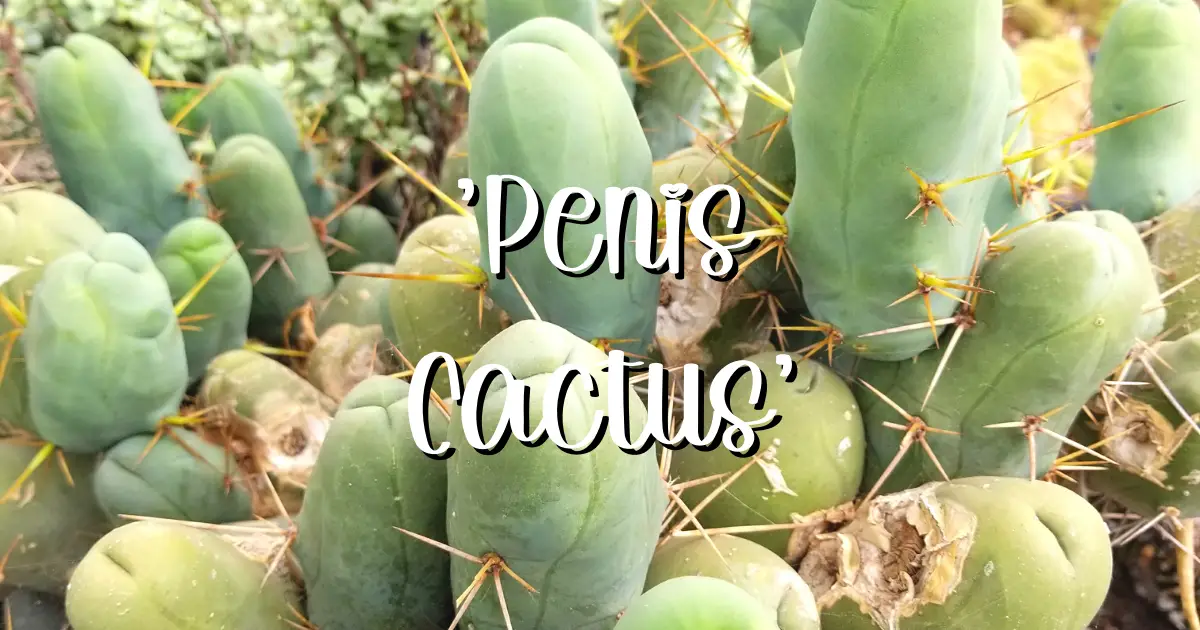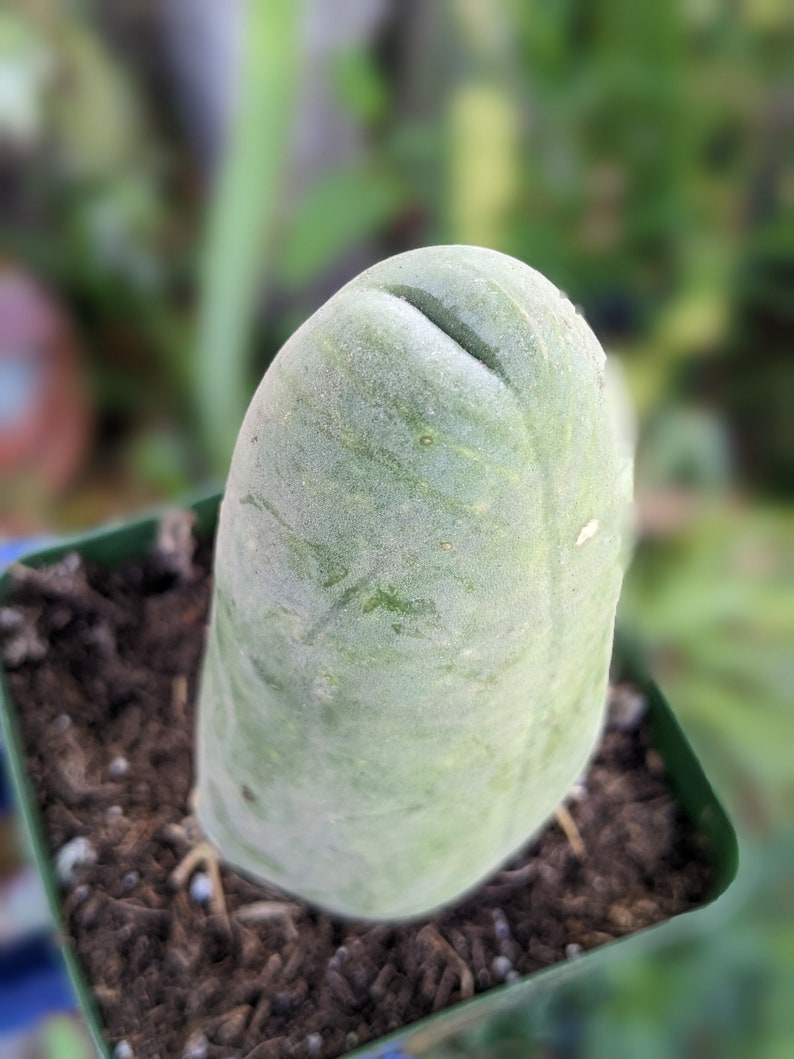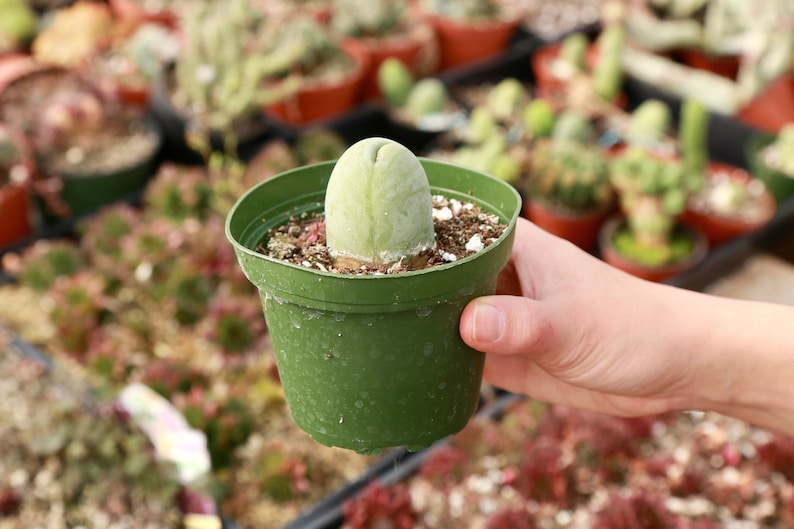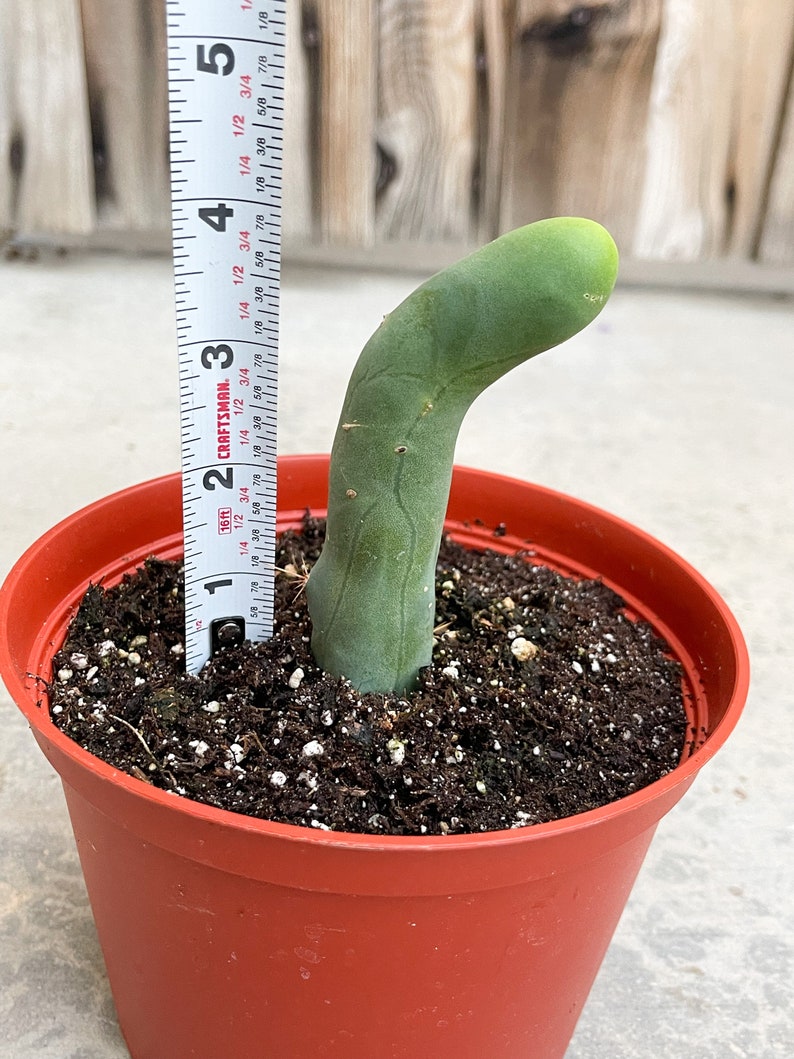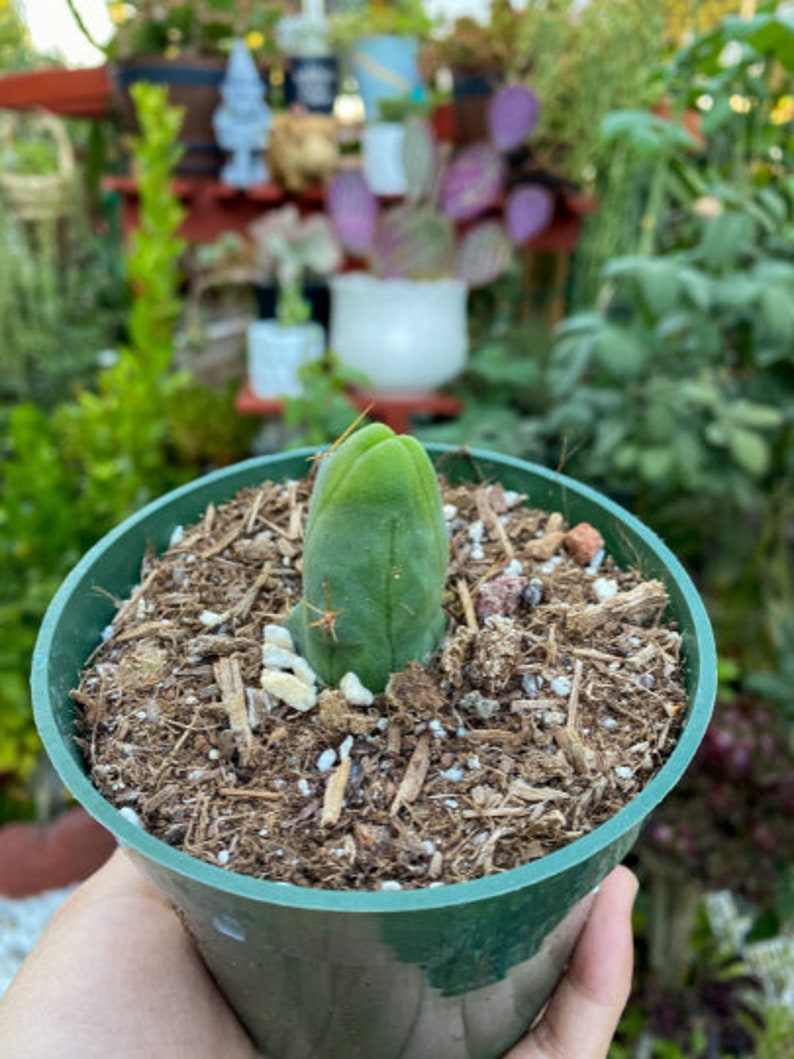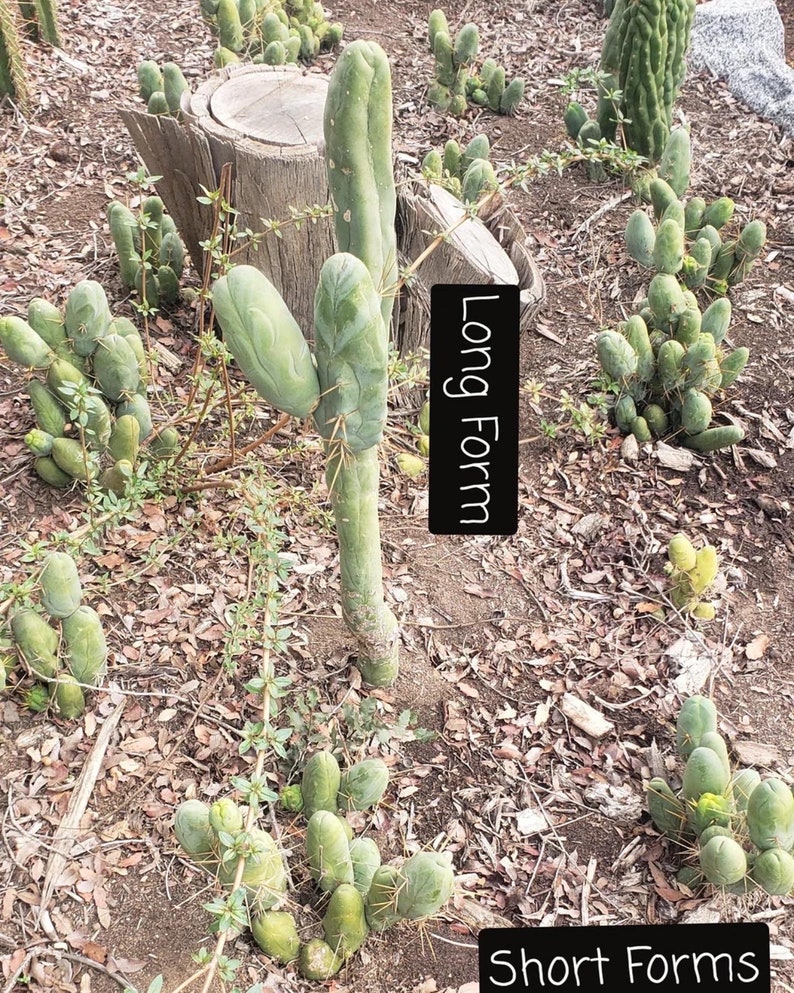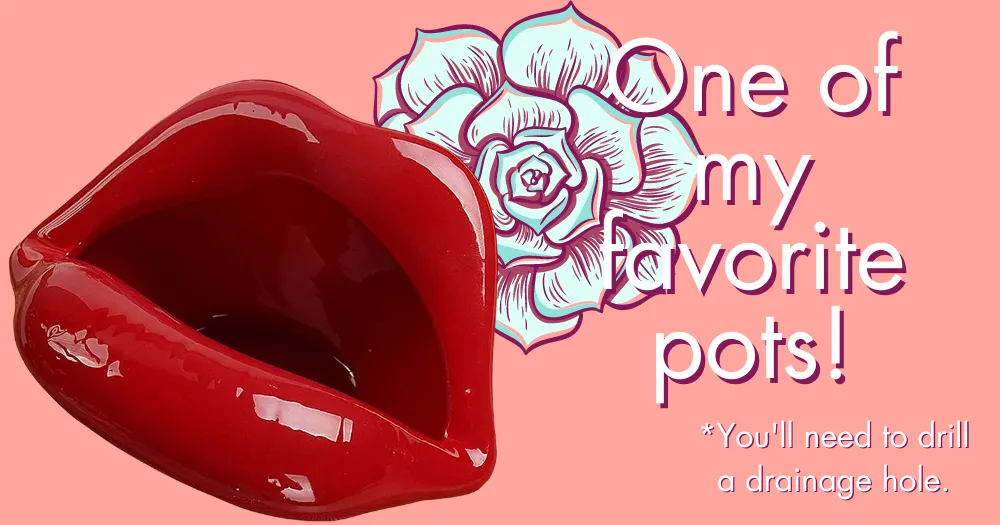Trichocereus bridgesii monstrose ‘Penis Cactus’ AKA TBM Cactus is a unique and interesting succulent that belongs to the Cactaceae family. Its common name comes from its shape, which resembles a phallus.

Description
This phallic looking cactus has a blue-green hue, and its flowers bloom in shades of white, pink, and yellow. The slow growing cocktus has a columnar shape and clusters can grow up to 6 feet tall and 3 feet wide.
Care Guide:
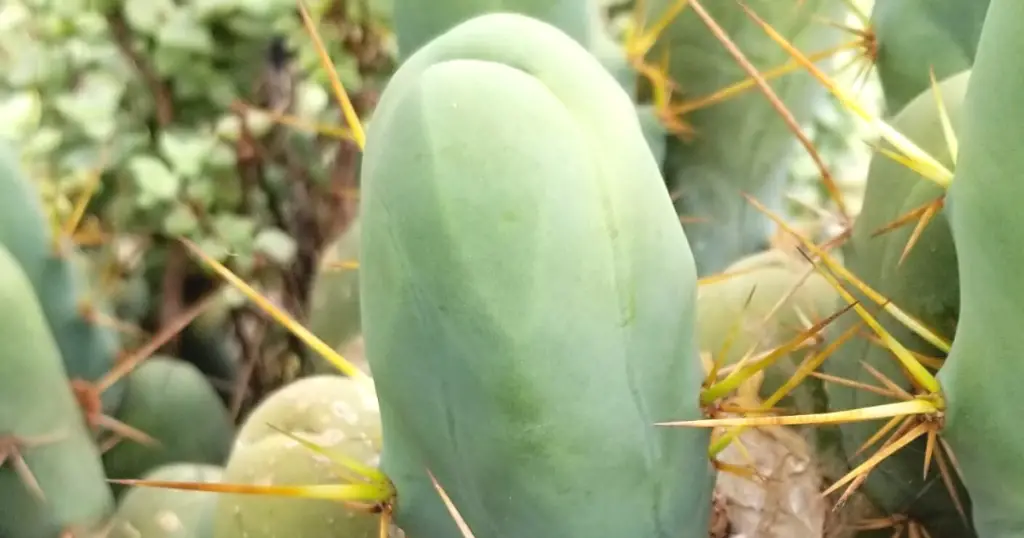
You might also like: Cactus Corking: What You Need to Know About This Common Problem
There are so many inappropriate things I want to say here, but I just can’t. I just can’t.

Native Habitat
Trichocereus bridgesii monstrose ‘Penis Cactus’ is native to the Andes mountains in Bolivia and Peru, where it grows in rocky and mountainous areas up to an altitude of 2,000 meters. In its natural habitat, this phallic dick cactus is exposed to intense sunlight and extreme temperature fluctuations. It has adapted to these conditions by developing a thick, waxy cuticle that helps reduce water loss and protect it from sun damage.
In the wild, Trichocereus bridgesii monstrose ‘Penis Cactus’ grows in well-draining soil that is rich in minerals. It often grows in association with other cacti and succulents, forming dense and diverse communities that are able to thrive in harsh environmental conditions.
Traditional Uses
The dick cactus has been traditionally used by indigenous people for medicinal and ceremonial purposes and is considered to have powerful psychoactive properties.
You might also like: Native Habitats of Succulents: Explore the Incredibly Diverse Environments
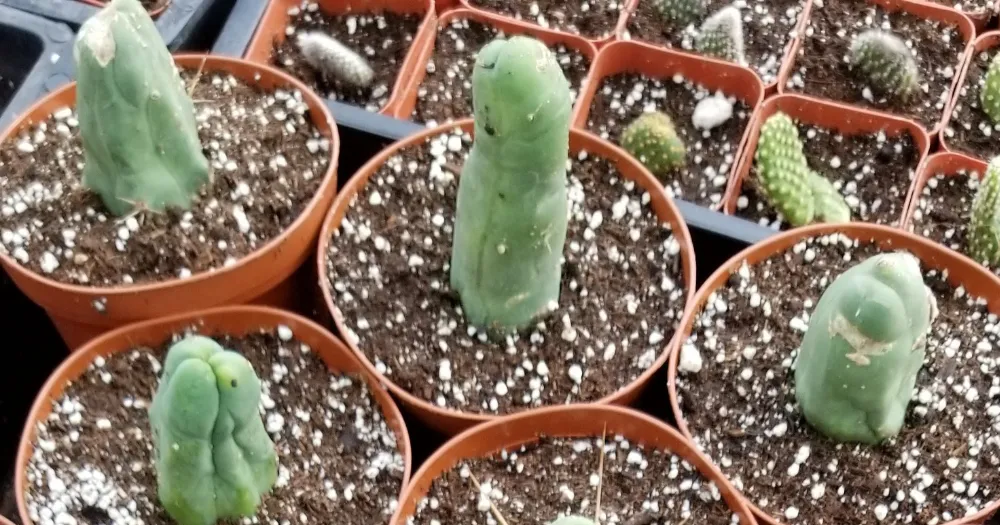
How to Water ‘Penis Cactus’
When watering Trichocereus bridgesii monstrose ‘Penis Cactus’, it’s essential to avoid letting water sit on the plant as this can cause rot. Luckily, this isn’t too much of a problem since the ‘Penis Cactus’ is rather smooth. Instead, water the soil directly around the base of the… cocktus. During the dormant season, which is usually in the winter months, reduce watering to once a month or less. Cacti store water and energy in their trunks and will use that once things slow down during dormancy.
How to Prevent Problems Associated With Watering
To prevent damage to Trichocereus bridgesii monstrose ‘Penis Cactus’, it’s crucial to avoid getting water on the creases of the trunk/stem while watering. Instead, water the soil directly around the base of the dick cactus.
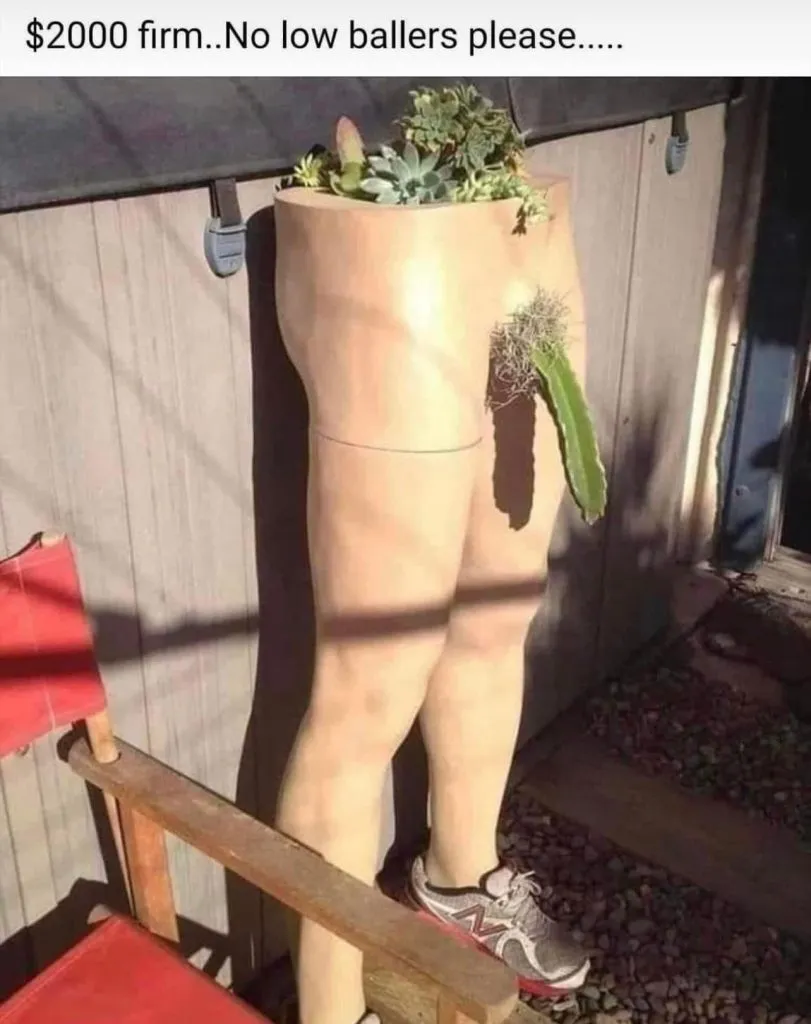
Variables Affecting Watering Amount and Frequency
It’s important to note that the amount and frequency of watering will depend on the growing conditions, including temperature, humidity, and sunlight. Therefore, it’s essential to observe the cactus closely and adjust watering accordingly. Signs of overwatering, such as soft and mushy leaves or a brown and soggy stem, require immediate action. The TBM cactus should be allowed to dry out completely before watering again to prevent further damage from an overwatered cactus.
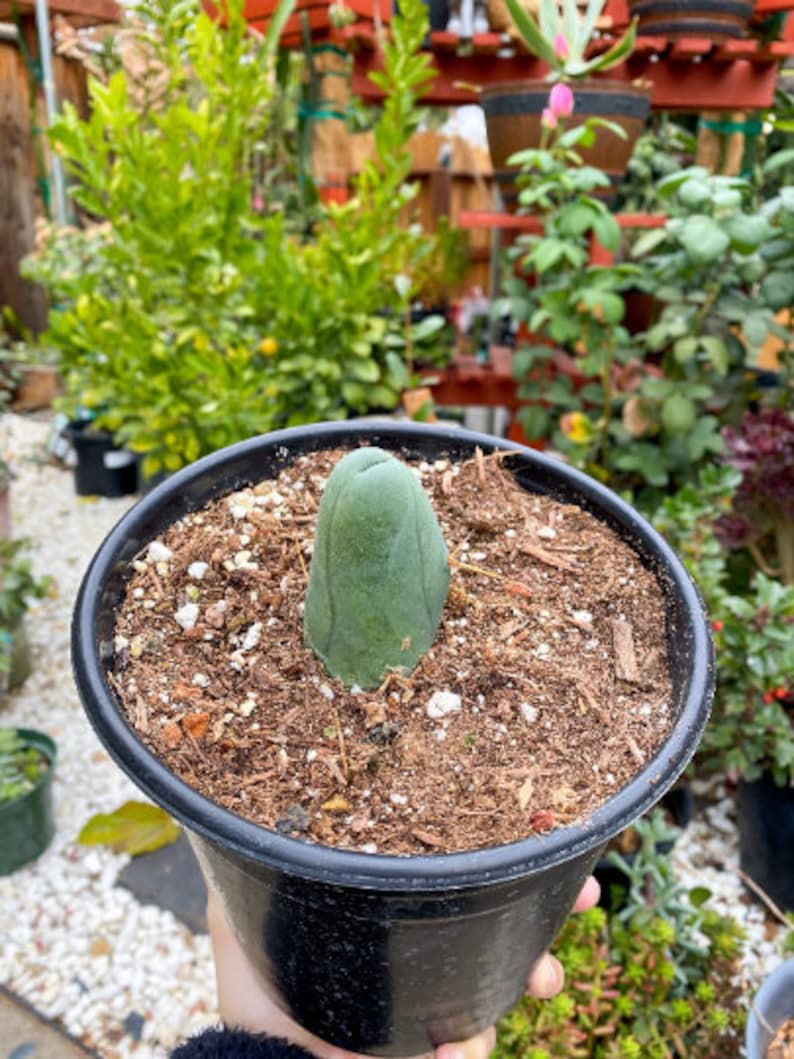
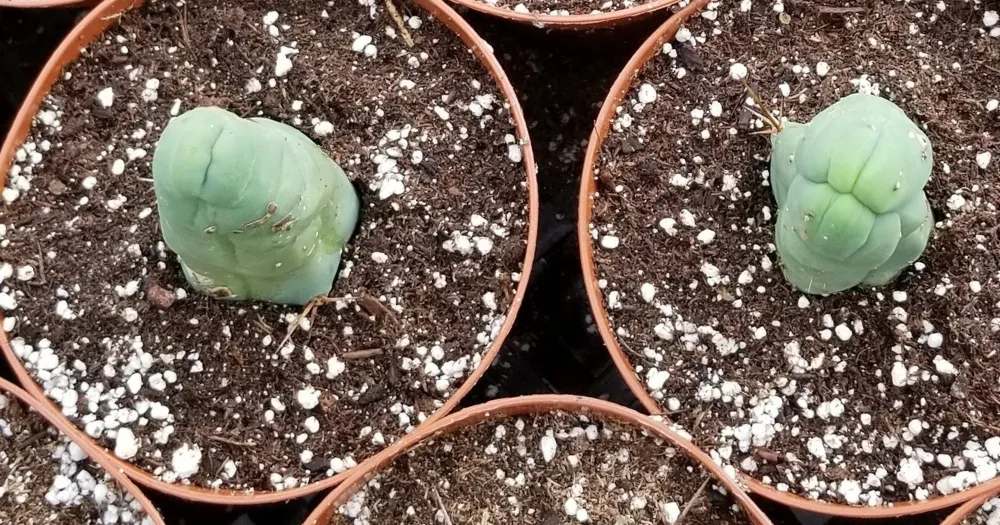
Can I use tap water to water my Penis Cactus?
It is not recommended to use tap water to water your Trichocereus bridgesii monstrose ‘Penis Cactus’. Tap water often contains chlorine, fluoride, and other chemicals that can build up in the soil over time and may harm the cactus. Instead, it is best to use filtered or rainwater to water your Penis Cactus.
How to Prepare Tap Water for Your Cactus
If tap water is your only option, you can leave the water out for 24-48 hours before using it to allow the chemicals to dissipate. Using non-treated water when possible will help keep your Penis Cactus healthy in the long run.
How do I know if my Penis Cactus is getting too much or too little water?
Some signs that your Trichocereus bridgesii monstrose ‘Penis Cactus’ is getting too much water include:
• Soft, rotten spots on the cactus, especially at the base
• Mushy, discolored tissue
• Limp, wilted appearance
• Foul odor from the base or soil
What to Do if You’ve Overwatered
If you notice any of these signs, stop watering and allow the soil to dry out. Once the rot is removed, less water and better drainage can help prevent recurrence.
Signs of under-watering include:
• Shriveled, wrinkled skin
• Lack of new growth
• Soil is extremely dry
• Cactus becoming lighter in weight and less firm
What to do if Underwatered
If under-watered, slowly increase watering and maintain more consistent moisture. The cactus dick may recover as the tissue plumps up again, but severe dehydration can be damaging. Monitoring your watering schedule and the soil’s moisture is key to keeping your Penis Cactus properly hydrated.
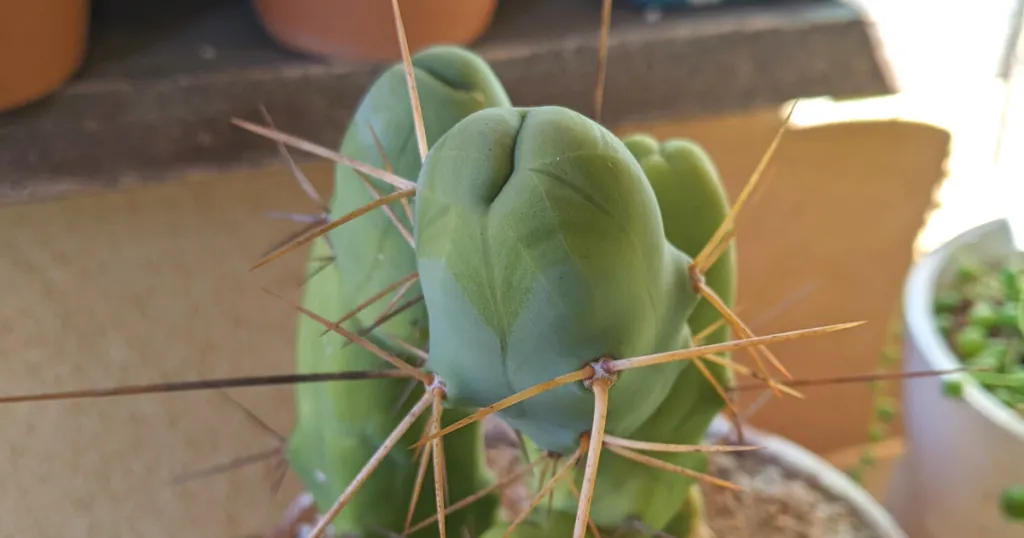
You might also like: How & When to Water Succulents So They Don’t Die
Soil
To keep your Trichocereus bridgesii monstrose ‘Penis Cactus’ upright and well-endowed, it requires a soil mix that drains well but retains some moisture. A coarse, fast-draining mix will leave it shriveled, while a dense, water-retentive mix can lead to rot—neither of which are desirable.
DIY Soil Mix
A suitable mix for your dick shaped plant is 2 parts cactus soil or potting soil, 2 parts perlite, and 1 part coarse sand or pumice. The soil provides nutrients, while the perlite and sand/pumice maintain aeration and drainage. For extra vigor, add controlled-release fertilizer to the soil mix before planting. With a suitable medium and regular watering when the soil is dry, your Penis Cactus will stand tall, plump, and proud. But be careful not to overwater, as that can lead to fungal disease and a quick, unsatisfying droop and decline. With proper care, it can thrive and bring you lasting enjoyment.
You might also like: Repotting Succulents: The Best Time to Repot Your Plants and 3 Ways to Tell When It’s Time
When and How to Repot
When repotting Trichocereus bridgesii monstrose ‘Penis Cactus’, choose a container that has drainage holes to prevent water from accumulating at the bottom. Ensure that the soil is dry before repotting, and water the cactus only after a few days to allow the roots to settle in the new soil. Finally, avoid over-fertilizing the cactus, as this can lead to salt buildup in the soil, which can damage the plant’s roots and affect its overall health.
You might also like: Succulent Soil: Ultimate Guide & 4 DIY Recipes to Keep Your Succulents Happy and Healthy
How to Propagate ‘Penis Cactus’
Trichocereus bridgesii monstrose ‘Penis Cactus’ is a relatively easy cactus to propagate through stem cuttings. Propagation can be done at any time of the year, but it is best to do it during the plant’s active growing season, which is in the spring and summer.
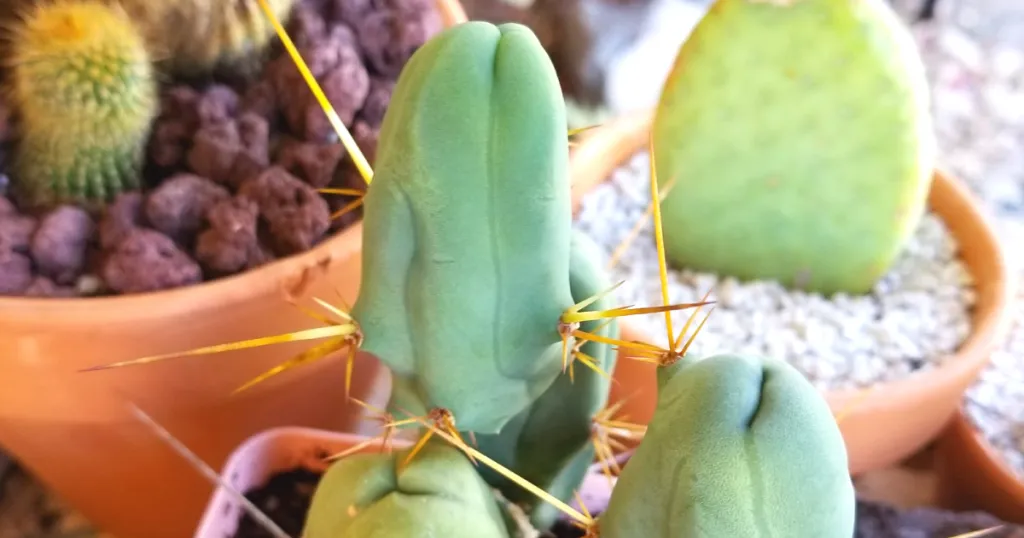
To propagate, begin by selecting a healthy stem on the cactus. Using a clean, sharp pair of scissors or pruning shears, cut a 6-inch piece of stem from the parent cactus. Be sure to make a clean cut and avoid damaging the stem or any nearby branches. Allow the cutting to dry out in a shaded area for a few days, which will help prevent rot when planted in soil.
After the stem has dried out, plant it in a well-draining soil mix. You can use a commercial cactus soil mix or make your own by mixing coarse sand, perlite, and potting soil. With any cacti (especially cuttings), I always recommend incorporating more inorganic grit into the soil so it isn’t sitting in moist soil. That can introduce harmful bacteria into the freshly cut end. Insert the cut end of the stem about an inch into the soil and gently firm the soil around it. Prop it up with heavier rocks, if needed.
How to Water Your Cutting
Water the cutting lightly, taking care not to overwater it. Keep the cutting in a shaded area and avoid direct sunlight until it roots, which usually takes about 2-3 weeks. You can test for root growth by gently tugging on the cutting. If you feel resistance, the cutting has successfully rooted and can be moved to a brighter location.
How to Acclimate Your Cutting
Once the new TBM cactus has established roots, you can gradually increase its exposure to sunlight and begin treating it like a mature Trichocereus bridgesii monstrose ‘Penis Cactus’. With proper care and attention, your new cactus will grow and thrive, eventually producing its signature stunning blooms.
You might also like: Propagating Succulents 4 Ways: The Best Guide Ever
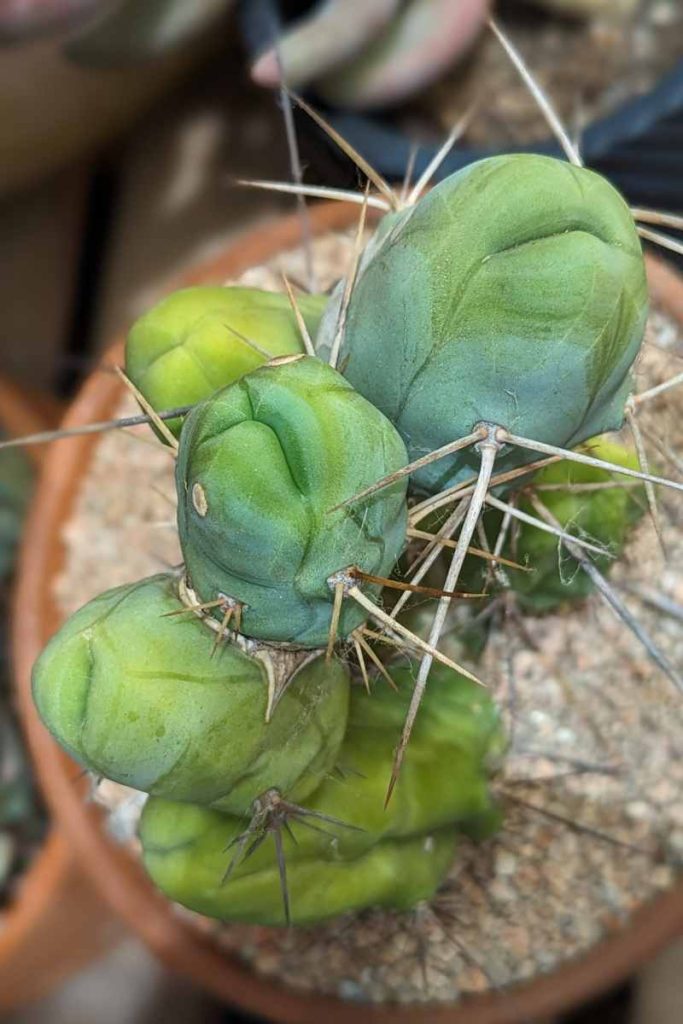
Where to Buy a ‘Penis Cactus’ (TBM Cactus)
Click on the image below to buy your very own TBM Cactus from a small business on Etsy!

Light
Trichocereus bridgesii monstrose ‘Penis Cactus’ is a sun-loving cactus that requires bright, indirect sunlight to thrive. This phallic looking cactus prefers to be grown in a location that receives at least 6 hours of bright, filtered sunlight per day. While it can tolerate some direct sunlight, too much direct sunlight can lead to sunburn and damage to the plant’s tissues. If you notice any signs of sunburn on your Trichocereus bridgesii monstrose ‘Penis Cactus’, such as brown or yellow spots on the leaves or stem, move it to a location with more shade to allow it to recover.
Growing in Low Light Conditions Indoors
In low-light conditions, Trichocereus bridgesii monstrose ‘Penis Cactus’ may not grow as well and may become elongated as it reaches for more sunlight. If you notice that your TBM cactus is stretching out and becoming leggy, it is likely not receiving enough light. You can remedy this by moving the cactus to a location with more light, or supplementing its light with artificial light sources such as grow lights. When using grow lights, ensure that the light source is positioned about 6 to 12 inches above Trichocereus bridgesii monstrose ‘Penis Cactus’ and is on for 12 to 16 hours per day.
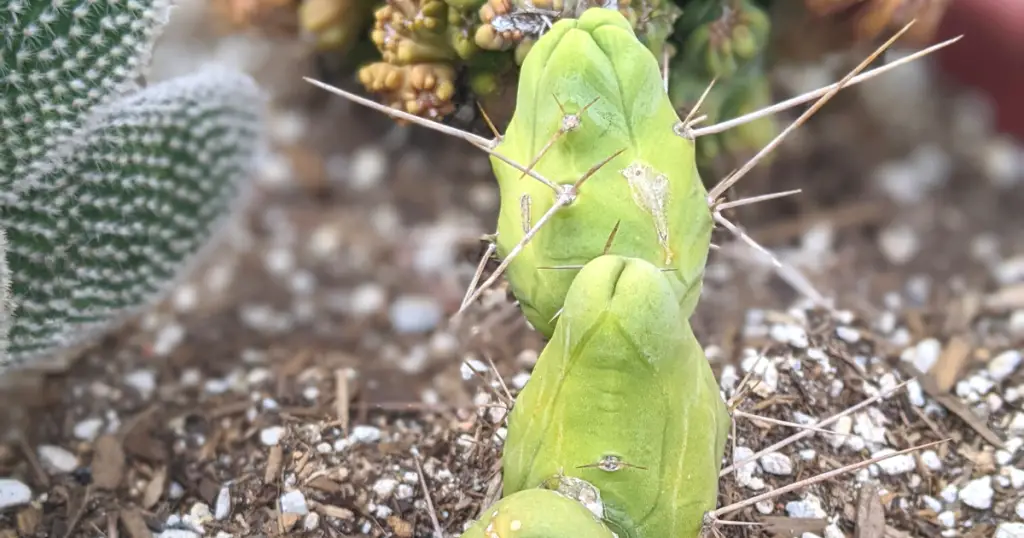
You might also like: How Much Light Do Succulents Need? A Comprehensive Guide in 12 Parts
Fertilizer
It does not require frequent fertilization, but it can benefit from a small amount of cactus fertilizer during the growing season. It is best to dilute the fertilizer to at least half strength to prevent fertilizer burn.
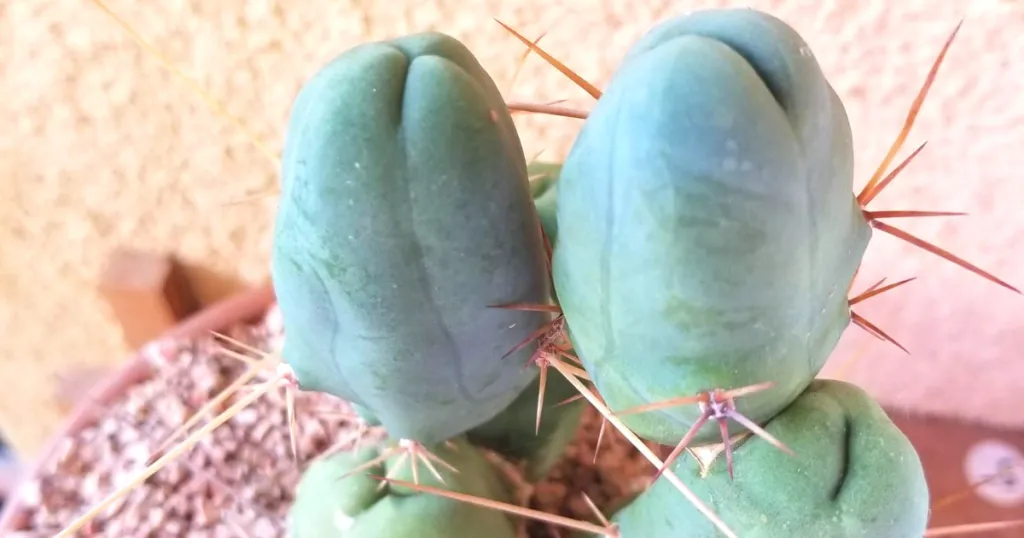
You might also like: Succulent Fertilizer: The Ultimate Guide to Healthy Succulents + 8 DIY Fertilizer Recipes
Common Problems and Solutions
Like other succulents, Trichocereus bridgesii monstrose ‘Penis Cactus’ is susceptible to certain problems that can affect its growth and health.
Overwatering
The most common issue that growers encounter with this cactus is overwatering. Overwatering can lead to root rot, which can eventually kill Trichocereus bridgesii monstrose ‘Penis Cactus’. To avoid overwatering, allow the soil to dry completely between watering sessions. In addition, ensure that the TBM cactus is grown in well-draining soil to prevent water from accumulating at the bottom of the pot.
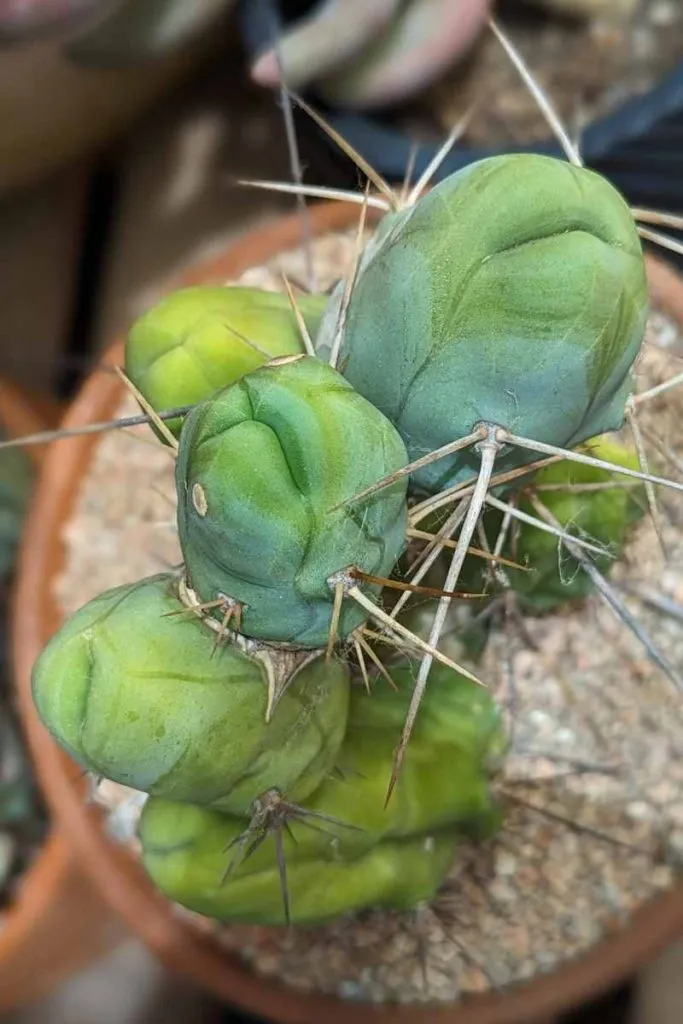
Insects
Another problem that may affect Trichocereus bridgesii monstrose ‘Penis Cactus’ is infestation by pests such as mealybugs and spider mites. These pests can cause damage to the cactus by feeding on its leaves and stem. To prevent pest infestations, inspect the TBM cactus regularly and take action immediately if you notice any signs of infestation. You can use insecticidal soap or neem oil to control pest populations. Alternatively, you can remove the affected parts of your Trichocereus bridgesii monstrose ‘Penis Cactus’ and discard them to prevent the pests from spreading to other parts.
Sunburn
Lastly, Trichocereus bridgesii monstrose ‘Penis Cactus’ may also suffer from sunburn if exposed to direct sunlight for extended periods. Sunburn can cause damage to the plant’s tissues and affect its overall health. To prevent sunburn, ensure that the cactus is grown in a location that receives bright but indirect sunlight. If you need to move Trichocereus bridgesii monstrose ‘Penis Cactus’ to a sunnier location, do so gradually to allow the cactus to adjust to the increased sunlight.
You might also like: 12 Succulent Pests and Diseases: Identification, Treatment, and Easy Prevention of Mealybugs, Thrips and More
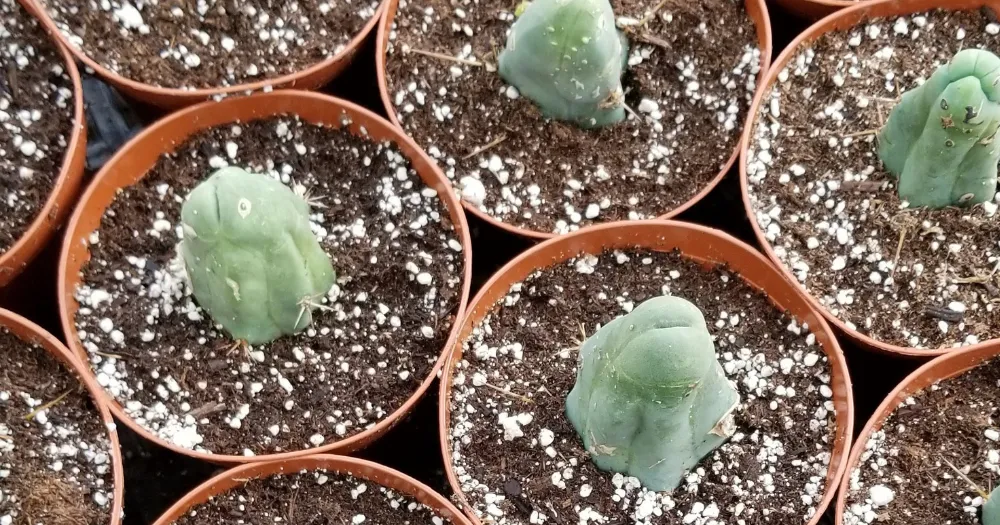
Hardiness Zone and Temperature
Trichocereus bridgesii monstrose ‘Penis Cactus’ is a hardy succulent that can thrive in a range of temperatures. This cactus is native to the high-altitude regions of Bolivia and Peru, where it has adapted to withstand harsh weather conditions. It is hardy in USDA zones 9b to 11b, which covers areas with temperatures ranging from 25°F to 50°F (-3.9°C to 10°C) in winter.
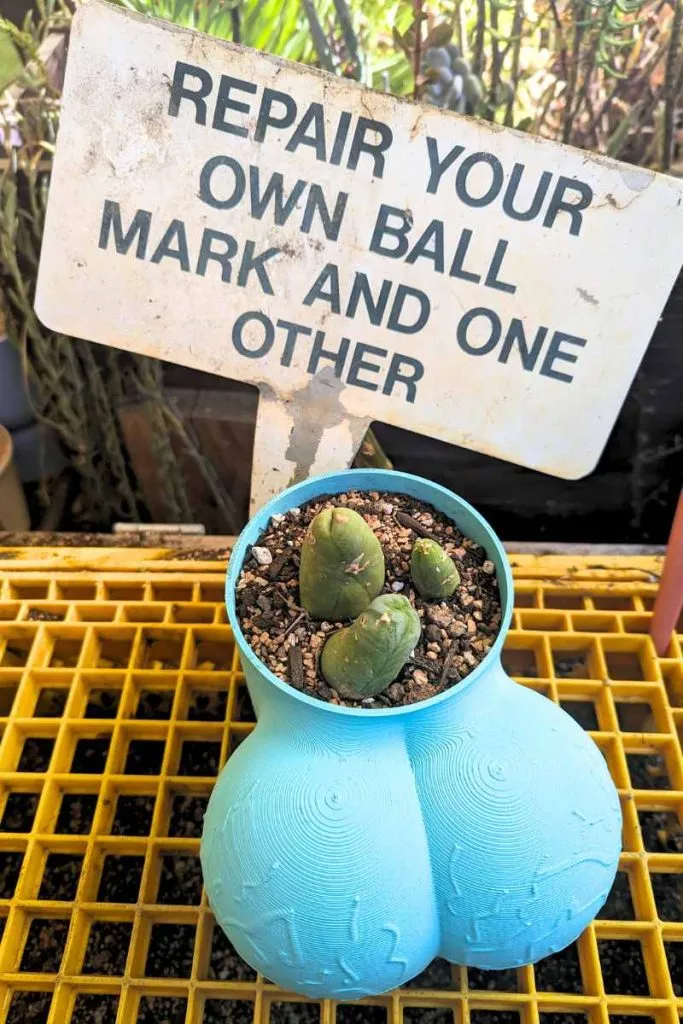
Colder Temperatures
Although Trichocereus bridgesii monstrose ‘Penis Cactus’ can tolerate temperatures as low as 20°F (-6.7°C), it prefers a warmer climate. In areas with colder temperatures, the cactus should be kept indoors during the winter or protected from frost. When grown indoors, the cactus should be placed near a bright window to receive enough light. In general, Trichocereus bridgesii monstrose ‘Penis Cactus’ grows best in temperatures between 70°F and 90°F (21.1°C and 32.2°C).
Extreme Temperatures
In areas with extreme weather conditions, such as heatwaves or droughts, Trichocereus bridgesii monstrose ‘Penis Cactus’ may require additional care. During heatwaves, the cactus may need more frequent watering to prevent dehydration. In droughts, the TBM cactus can survive without water for several weeks but may need additional watering during the growing season. In general, it is best to avoid exposing Trichocereus bridgesii monstrose ‘Penis Cactus’ to extreme weather conditions to prevent damage to its delicate structure.
You might also like: Succulent Care by Zones

Where to Buy Succulents Online

